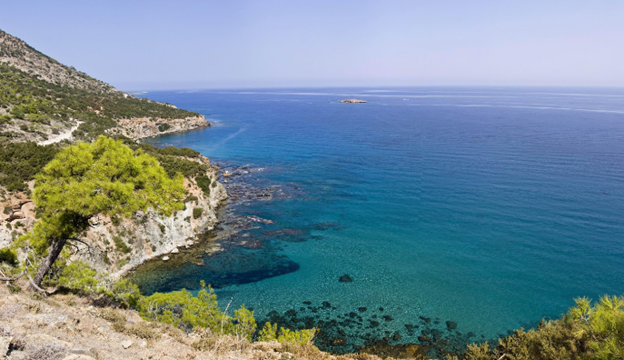
BALANCING NATURE AND SUSTAINABLE ENERGY IN AKAMAS, CYPRUS
Overview
To achieve this, the municipality could facilitate the expansion of solar Photovoltaic (PV) installations on rooftops and public buildings. Public buildings should lead by adopting energy-efficient solutions and integrating battery storage. Encouraging residential PV adoption, investing in electric mobility, and implementing public awareness campaigns on smart energy use will further support a sustainable energy transition.
a)
b)
Figure 1 Monthly representation of technologies contributing to the power supply in a) RES and b) HighRES scenario, with import representing the necessary additional energy that would be imported from the grid
Socio-Economic Feasibility Analysis
The socio-economic feasibility analysis for the energy transition scenarios in the Akamas Peninsula emphasizes the economic performance and job creation potential associated with renewable energy investments. The HighRES scenario, aiming for a highly renewable energy system, requires significant investments, including approximately €3 million per MW for wind power and €1.2 million per MW for solar PV, alongside extensive deployment of electric vehicles (EVs). The higher cost of the HighRES scenario implementation is offset by long-term sustainability and energy independence. This scenario is projected to generate substantial employment, creating approximately 120 full-time equivalent (FTE) jobs in the solar sector, 84 FTE jobs in wind power, and 48 FTE jobs in solar thermal installations by 2030. The RES scenario, which represents an intermediate level of renewable integration, anticipates at least 10 FTE jobs in the solar PV sector and 3-4 FTE jobs in solar thermal installations. These job figures indicate a steady demand for skilled labor in renewable energy sectors, ensuring both economic growth and energy sustainability in the region. Additionally it was determined that public-private partnership can accelerate the adoption of RES technologies as well as that vehicle battery storage enhances grid stability, reducing reliance on fossil fuel backups.
Macro objective:
- Demonstrate the feasible integrated energy system for an insular community, based on locally available renewable energy sources
Specific objectives:
- Use locally available renewable energy
- Decarbonize sectors of energy demand
- Provide socio-economically sound options for the development of an island
Impacts that could be achieved by 2030:
- CO2 emissions reduced by 19 kt per year, due to increased RES adoption
- New RES installations: 20 MW Solar PV, 20 MW wind power
- Local employment benefits: 7+ jobs in RES installation and maintenance
Read more here.
Learn More about the PRISMI Methodology.
Contact
Antun Pfeifer
Technical transferring partner in the PRISMI PLUS project



